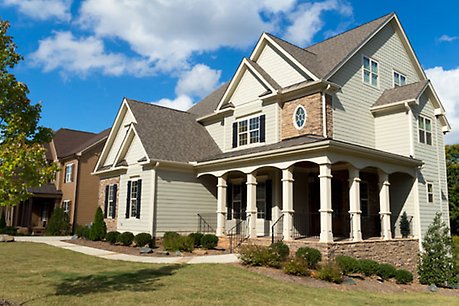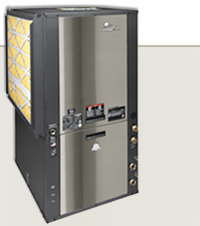FACT: Geothermal systems provide the most efficient, comfortable and environmentally friendly method of heating & cooling.
Blog
Geothermal Saving Two Virginia Households Big on Energy Bills
July 20, 2015 – From June 2011 to April 2012, there were 624 geothermal systems installed in Virginia homes. The Daily Press (Hampton, Va.) talked to two of those home owners, and both have experienced big energy bill savings.

When Scott Colton bought a new home in Southeastern Virginia, he was not told that the home uses a geothermal system until later in the process. Colton said the geothermal system was a “considerable amount of icing on the cake” and that the system is doing a great job at keeping his home comfortable for much less compared to his neighbor’s homes.
His current home is about twice the size of his previous one in Hampton, but the cost to heat and cool it is only slightly higher — about $250 a month compared to $300 for a house that was half the size.By comparison, he said, his immediate neighbor told him it’s not uncommon for his own bills to top $500.“He says, ‘You wouldn’t believe what you’re probably saving,'” Colton said.
Make your neighbors jealous of your energy bill savings! Use our geothermal savings calculator to see how much you could be saving with geothermal:

Another Satisfied Geothermal Heating and Cooling Customer
Lehan Crane built a new 2,990 square foot home in Southeastern Virginia that includes a bevy of sustainable home technologies, including a geothermal heat pump system.
Crane said he included the geothermal system out of a desire to reduce his carbon footprint. Crane’s geothermal system is a closed-loop system, which means that his geothermal system uses a pipe buried in the ground that acts as a heat exchanger with his geothermal heating and cooling unit.
The loop is filled with an antifreeze solution that, in winter, absorbs heat from the ground and is circulated to the heat pump, making home heating in winter much easier and more efficient (compared to traditional systems).
In summer, the loop transfers heat from the house into the ground. This is much more efficient than traditional systems, which transfer the heat to the already hot outside air. In comparison, the ground is much cooler in summer (around 50°F year round) than is the air and accepts heat much easier than does the air.
The same principle is true when it is cold outside and you want to heat your home. A traditional heat pump system tries to gain heat from the outside, where it is very cold. The traditional heat pump system then has to heat the air a lot (and work hard) because the heat exchanger didn’t gather much heat.
However, the ground is usually around 50°F, so there is much more heat to transfer into your home. The geothermal heat pump system then takes that temperature and warms it even more, blowing warm air into your home.
(If you want to learn more about geothermal, click here to watch a video on how geothermal works.)
Crane said his geothermal system is performing as expected and saving him money on his energy bills:
Crane says he keeps his home around 75 degrees in summer and 69 degrees in winter, and his monthly heating and cooling costs run between $80 and $170. Meanwhile, he says, his neighbor’s monthly bill runs about $300.
Crane said the 30% geothermal tax credit reduced the cost of the geothermal system where it didn’t cost much more than what a traditional heating and cooling system costs. Read more about the 30% geothermal tax credit.


